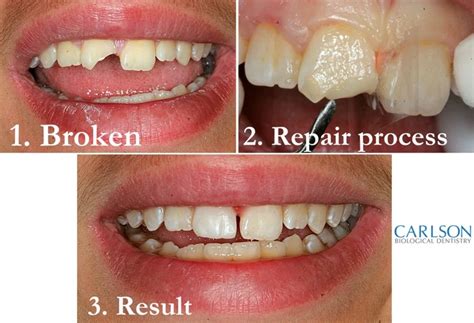How to Temporarily Glue a Tooth Back In: A Step-by-Step Guide
Losing a tooth, even temporarily, can be a jarring experience. Before you panic, know that in many cases, you can take steps to temporarily reattach the tooth until you can see a dentist. This article provides a step-by-step guide on how to temporarily glue a tooth back in, along with crucial considerations and precautions. Remember, this is a temporary solution; professional dental care is essential.
What You'll Need
Before attempting to reattach your tooth, gather the following materials:
- The knocked-out tooth: Handle it carefully! Avoid touching the root.
- Milk or Saline Solution: This helps keep the tooth moist and prevents the cells from drying out. If neither is available, you can use your own saliva as a last resort.
- A Clean Container: To store the tooth while you prepare.
- A Clean Cloth or Gauze: To gently blot the tooth.
- Dental Adhesive (optional): While not strictly necessary for temporary reattachment, some over-the-counter denture adhesives can provide a slightly more secure hold. However, use with caution, and be sure it's designed for use in the mouth.
- A Mirror: To help you visualize the placement.
Step-by-Step Guide to Temporarily Reattaching a Tooth
1. Retrieve and Preserve the Tooth: Gently pick up the tooth by the crown (the visible part), avoiding the root. Rinse it gently with milk or saline solution if available. If not, carefully wipe it with a clean cloth or gauze. Place it in the milk, saline solution, or your own saliva and store it in a clean container until you're ready to reinsert it.
2. Clean the Socket: Gently rinse your mouth with warm water to remove any debris from the tooth socket. Avoid using excessive force, as this could damage the surrounding gum tissue.
3. Reinsert the Tooth: Carefully position the tooth back into its socket. Try to align it as accurately as possible with your other teeth. Gently press it into place.
4. Stabilize the Tooth (Optional): If you're using dental adhesive, carefully apply a small amount to the tooth's surface and gently press it back into the socket. Follow the adhesive manufacturer's instructions carefully. Remember that biting down too hard could dislodge the tooth.
5. Maintain Stability: Bite down gently on a clean gauze pad to hold the tooth in place for at least 30 minutes. Avoid talking, eating, or drinking for this period.
What NOT to Do
- Don't touch the root of the tooth: This can damage the cells essential for reattachment.
- Don't scrub or clean the tooth aggressively: A gentle rinse is sufficient.
- Don't force the tooth into the socket: If it doesn't go in easily, don't push it.
- Don't use superglue or other household adhesives: These are not designed for use in the mouth and can be extremely dangerous.
How Long Can a Tooth Stay Temporarily Glued?
A temporarily reattached tooth should ideally only remain in place for a few hours at most. The goal is to keep it moist and in its socket until you can see a dentist. Leaving it in place for an extended period without professional care can lead to infection or damage.
Can I Reattach a Broken Tooth?
Reattaching a broken tooth fragment is possible, but it's even more crucial to see a dentist immediately. The process is very similar, but you'll want professional guidance.
How Long Does it Take to See a Dentist After Temporarily Gluing a Tooth Back In?
You should see a dentist as soon as possible, ideally within 24 hours. The sooner you seek professional help, the better the chances of successfully reattaching the tooth permanently.
What Happens at the Dentist's Office?
Your dentist will assess the tooth and socket, clean the area thoroughly, and determine the best course of action. They may use a special bonding agent to secure the tooth permanently, or they might recommend other treatment options depending on the extent of the damage.
Disclaimer: This information is for guidance only and should not be considered medical advice. Always consult a dentist for any dental concerns. This article is not a substitute for professional dental care.

